stablecoin
description: a type of cryptocurrency designed to have a stable value by being pegged to a reserve asset
20 results
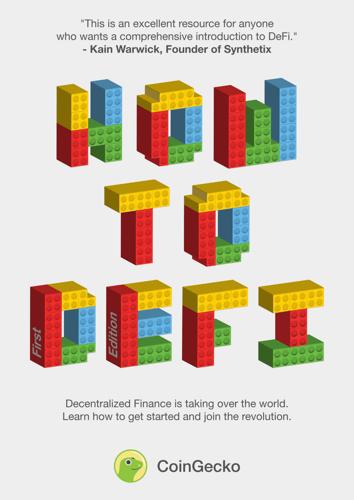
How to DeFi
by
Coingecko
,
Darren Lau
,
Sze Jin Teh
,
Kristian Kho
,
Erina Azmi
,
Tm Lee
and
Bobby Ong
Published 22 Mar 2020
~ Recommended Readings Argent: The quick start guide (Matthew Wright) https://medium.com/argenthqargent-the-quick-start-guide-13541ce2b1fb A new era for crypto security (Itamar Lesuisse) https://medium.com/argenthq/a-new-era-for-crypto-security-57909a095ae3 A Complete Beginner’s Guide to Using MetaMask (Ian Lee) https://www.coingecko.com/buzz/complete-beginners-guide-to-metamask MyCrypto’s Security Guide For Dummies And Smart People Too (Taylor Monahan) https://medium.com/mycrypto/mycryptos-security-guide-for-dummies-and-smart-people-too-ab178299c82e Part Three: Deep Diving Into DeFi Chapter Five: Decentralized Stablecoins The prices of cryptocurrencies are extremely volatile. To mitigate this volatility, stablecoins that are pegged to other stable assets such as the USD were created. Stablecoins help users to hedge against this price volatility and was created to be a reliable medium of exchange. Stablecoins have since quickly evolved to be a strong component of DeFi that is pivotal to this modular ecosystem. There are 19 stablecoins currently listed on CoinGecko. The top 5 stablecoins has a market capitalization totaling over $5 billion. Top 5 Cryptocurrency Stablecoins (Feb 2020) Rank Bank Market Cap. ($ million) 1 Tether (USDT) 4,284 2 USD Coin (USDC) 443 3 Paxos Standard (PAX) 202 4 True USD (TUSD) 142 10 Dai (DAI) 123 Source: CoinGecko.com We will be looking into USD-pegged stablecoins in this chapter.
…
. ($ million) 1 Tether (USDT) 4,284 2 USD Coin (USDC) 443 3 Paxos Standard (PAX) 202 4 True USD (TUSD) 142 10 Dai (DAI) 123 Source: CoinGecko.com We will be looking into USD-pegged stablecoins in this chapter. Not all stablecoins are the same as they employ different mechanisms to keep their peg against USD. There are two types of pegs, namely fiat-collateralized and crypto-collateralized. Most stablecoins employ the fiat-collateralized system to maintain their USD peg. For simplicity, we will look at two USD stablecoins, Tether (USDT) and Dai (DAI) to showcase the differences in their pegging management. Tether (USDT) pegs itself to $1 by maintaining reserves of $1 per Tether token minted. While Tether is the largest and most widely used USD stablecoin with daily trading volumes averaging approximately $30 billion in the month of January 2020, Tether reserves are kept in financial institutions and users will have to trust Tether as an entity to actually have the reserve amounts that they claim.
…
~ DeFi Key Categories In this book, we will be covering the following 8 major categories of DeFi: Stablecoins The prices of cryptocurrencies are known to be extremely volatile. It is common for cryptocurrencies to have intraday swings of over 10%. To mitigate this volatility, stablecoins that are pegged to other stable assets such as the USD were created. Tether (USDT) was one of the first centralized stablecoins to be introduced. Every USDT is supposedly backed by $1 in the issuer’s bank account. However, one major downside to USDT is that users need to trust that the USD reserves are fully collateralized and actually exist. Decentralized stablecoins aim to solve this trust issue.
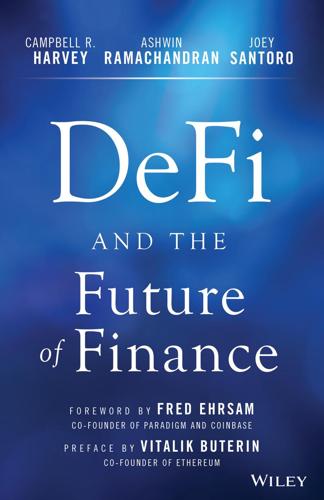
DeFi and the Future of Finance
by
Campbell R. Harvey
,
Ashwin Ramachandran
,
Joey Santoro
,
Vitalik Buterin
and
Fred Ehrsam
Published 23 Aug 2021
They can even be used to provide on-chain exposure to the returns of an off-chain asset if the target asset is not native to the underlying blockchain (e.g., gold, stocks, exchange-traded funds [ETFs]). The mechanism by which the stablecoin maintains its peg varies by implementation. The three primary mechanisms are fiat-collateralized, crypto-collateralized, and non-collateralized stablecoins. By far the largest class of stablecoins are fiat collateralized. These are backed by an off-chain reserve of the target asset. Usually they are custodied by an external entity or group of entities that undergo routine audits to verify the collateral's existence. The largest fiat-collateralized stablecoin is Tether5 (USDT) with a market capitalization of $62 billion, making it the third largest cryptocurrency behind Bitcoin and Ethereum at time of writing.
…
We will do a deep dive into MakerDAO and DAI in Chapter 6. Another popular crypto-collateralized stablecoin is sUSD, which is hard pegged to $1 through the Synthetix10 network token (SNX) exchange functionality. Crypto-collateralized stablecoins have the advantages of decentralization and secured collateral. The drawback is that their scalability is limited. To mint more of the stablecoin, a user must necessarily back the issuance by an overcollateralized debt position. In some cases like DAI, a debt ceiling further limits the supply growth. The last and perhaps most interesting class of stablecoins are non-collateralized. Not backed by any underlying asset and using algorithmic expansion and supply contraction to shift the price to the peg, they often employ a seigniorage model where the token holders in the platform receive the increase in supply when demand increases.
…
A noteworthy early example of an algorithmic stablecoin is Basis,11 which had to close due to regulatory hurdles. Current examples of algorithmic stablecoins include Ampleforth (AMPL)12 and Empty Set Dollar (ESD).13 The drawback to non-collateralized stablecoins is that they have a lack of inherent underlying value backing the exchange of their token. In contractions, this can lead to “bank runs,” in which many holders are left with large sums of the token that are no longer worth the peg price. There is still much work to be done – and regulatory hurdles to overcome – in creating a decentralized stablecoin that both scales efficiently and is resistant to collapse in contractions.14 Stablecoins are an important component of DeFi infrastructure because they allow users to benefit from the functionality of the applications without risking unnecessary price volatility.

Stake Hodler Capitalism: Blockchain and DeFi
by
Amr Hazem Wahba Metwaly
Published 21 Mar 2021
• Communication takes place offline through banks or other regulated financial institutions that act as a repository of currencies used to support Stable-coins. • The amount of currency used to support Stable-coin must be equal to the Stable-coin in circulation. With Cryptocurrency Cryptocurrency-based Stable-coins accept cryptocurrency as security and is conceptually similar to fiat-based Stable-coin. However, a key difference between the two interpretations is that while fiat collateral generally occurs outside the chain, the cryptocurrency used to support this type of Stable-coin blockchain is created using smart contracts decentralized approach. In most cases, it is more profitable to pay off the debt when the fixed value drops by blocking collateral so that consumers can borrow on smart transactions.
…
Let's talk about each one of the categories one by one besides MakerDAO that we just mentioned. Stable-coin Stable-coin is a cryptocurrency designed to reduce fixed-priced Bitcoins' volatility compared to "fixed" asset baskets or assets. Stable-coin can be linked to cryptocurrency, fiat currency, or commodities (e.g., precious or industrial metals). Soluble stables in currency, commodities, or fiat currency are known to be hedged, and the stables associated with the algorithm are called seigniorage (non-backed). Stable-coins are cryptocurrencies linked to an asset outside of the cryptocurrency community, for instance, the dollar or euro.
…
Stable-coins are cryptocurrencies linked to an asset outside of the cryptocurrency community, for instance, the dollar or euro. The main objective here is to stabilize the price. Backed Stable-coin The advantage of asset-based cryptocurrency is that coins are stabilized by assets that fluctuate outside the cryptocurrency space. Since Bitcoin and Altcoins are highly correlated, cryptocurrency holders cannot avoid significant price declines without leaving the market or seeking refuge in an asset-based Stable-coin. Additionally, if these coins are managed in good faith and have an asset redemption mechanism, they are unlikely to be lower than the underlying physical asset's value due to arbitration.
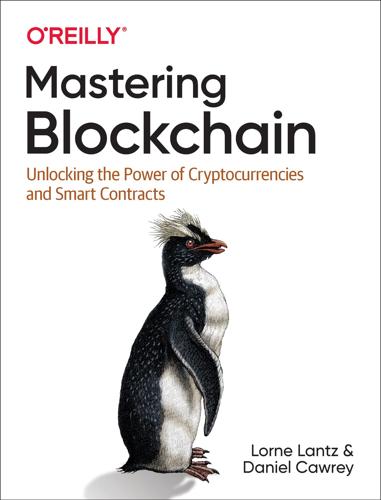
Mastering Blockchain: Unlocking the Power of Cryptocurrencies and Smart Contracts
by
Lorne Lantz
and
Daniel Cawrey
Published 8 Dec 2020
One thing that’s for sure is that Satoshi mined the Genesis block of Bitcoin, so in theory the easiest proof would be to uncover evidence of the identity behind that address. Crypto-Based Stablecoins In the previous chapter, we discussed a few examples of stablecoins, which use blockchain technology to peg a cryptocurrency to another, more stable asset. For the most part, stablecoins are pegged to the US dollar, since it is known as a global reserve currency, but other assets have been used too, including gold, agricultural commodities, and the euro. Many stablecoins are unregulated in the cryptocurrency world, although there are several stablecoin projects that are working with regulators and banks to foster a future where stablecoin assets are a large part of the ecosystem.
…
This is why trust in an oracle system is paramount. Stablecoins As blockchain-based assets that peg to the US dollar and other fiat currencies, stablecoins underpin services that don’t require banking intermediaries. Many stablecoins do have some regulatory risk (discussed in Chapter 6). In addition, there are various levels of governance and centralization between different projects. Nevertheless, interesting experiments are being done with stablecoins. We’ll briefly look at a few of them here. DAI In the volatile world of cryptocurrencies, DeFi requires a stable asset in order to properly service users. The major stablecoin cryptocurrency used for this today is the Maker project’s DAI.
…
Because of banking relationships, TUSD and USDC require users to provide personal information to redeem their stablecoins for fiat. However, inside the blockchain ecosystem, the stablecoins can be used pseudonymously, changing hands while leaving a blockchain record, as Figure 7-4 illustrates. Figure 7-4. How stablecoins can be used pseudonymously Although DAI is the most used stablecoin in DeFi applications, bank-backed solutions are competitors. The main difference is that TUSD and USDC are backed by fiat, whereas DAI is currently backed by cryptocurrencies. DeFi Services With increased stablecoin liquidity, financial services are being built on top of crypto.
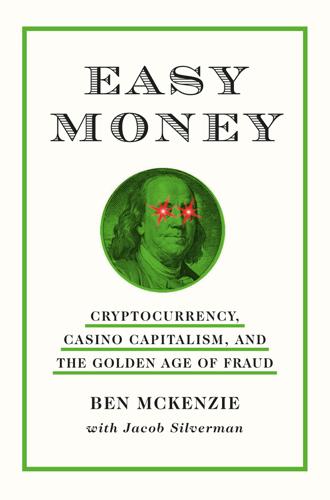
Easy Money: Cryptocurrency, Casino Capitalism, and the Golden Age of Fraud
by
Ben McKenzie
and
Jacob Silverman
Published 17 Jul 2023
CHAPTER 3 MONEY PRINTER GO BRRR For skeptics like Jacob and me, there was one corporation that reigned supreme when it came to our suspicions about the cryptocurrency industry: the “stablecoin” company Tether and its assorted entities such as the exchange Bitfinex. Tether was arguably the most important cryptocurrency of them all: At the time, 70 percent of all transactions in cryptocurrency were conducted in it, more than in either Bitcoin or Ethereum. Founded in 2014, Tether claims to be the first stablecoin ever created. (A stablecoin is a cryptocurrency pegged to an actual currency such as the US dollar.) On the crypto exchanges, one Tether (USDT) equals one US dollar.
…
Can you imagine the gall it takes to set up a fake copy of the New York Stock Exchange, one that, given its shaky underpinnings and nonexistent oversight, might attract who knows what kind of shady players? And then to refuse to even account for it? There are a few possible signs of trouble with almost any stablecoin. One is if it depegs, that is, if its value goes below one dollar. The lower it goes—a few cents is considered significant—and the longer it stays there, the worse the situation may be. Another obvious sign of trouble is if users seem to be moving their funds out of a particular stablecoin and into other tokens, especially competing stablecoins. By the first week of May, Terra was exhibiting both. On May 8, UST slumped to $0.985 as the markets showed signs of big holders fleeing Terra.
…
While that’s true, the difference to my mind was that liquidity in the crypto biz was far worse, and these exchanges were set up overseas in part to avoid complying with regulations that would provide investors with some protection. Instead, people rarely get any of their money back when an exchange shuts down. Sam again agreed this was a “big problem.” We moved on to stablecoins. SEC Chair Gary Gensler called stablecoins the “poker chips at the casino,” I said. Tether was the biggest stablecoin in terms of trading volume by a country mile. “Your company Alameda is one of Tether’s biggest clients.” “Alameda does create and redeem Tether. We’re one of the larger ones doing so.” “Okay, so there was an article from Protos, the crypto publication, from last year that said that Alameda and Cumberland, another trading firm, received $60 billion of USDT (Tether) over the time period they analyzed, which is equal to 55 percent of all outbound volume ever.”

Layered Money: From Gold and Dollars to Bitcoin and Central Bank Digital Currencies
by
Nik Bhatia
Published 18 Jan 2021
The Bitcoin protocol’s dominance as the primary value-transfer protocol of the Internet will likely endure for decades to come, much like how the Transmission Control Protocol, Internet Protocol, and Hypertext Transfer Protocol (TCP/IP/HTTP) dominate our digital interactions every day when we connect to the Internet or browse the web. Stablecoins A rapidly growing second layer within Bitcoin’s monetary pyramid is a new type of digital asset called stablecoins. Stablecoins are liabilities issued in the form of digital tokens by private sector companies. These stablecoins are supposed to trade at a “stable” value relative to dollars, for example. The moniker of “stable” is a bit of an oxymoron in this case because as we’ve learned, monetary instruments on lower layers of money rarely possess enduring stability. Stablecoins: digital coins that are stable until they aren’t. Stablecoins were invented because exchanges needed an easier and quicker way for customers to convert between BTC and USD.
…
Private sector banks are also looking to capitalize on the demand for dollar-pegged, ledger-based digital tokens: J.P. Morgan launched its own stablecoin, called JPM Coin, in 2020. In January 2021, the U.S. Treasury issued a definitive guidance on the legality of cryptocurrencies and stablecoins in a report from the Office of the Comptroller of the Currency (OCC).28 The guidance names both cryptocurrencies and distributed ledgers independent node verification networks (INVNs), formally defines the word “stablecoin” exactly as we have in this section, and approves both of them for use by banks to digitally transact value as long as banking laws are followed.
…
The European Central Bank, Federal Reserve, and other major central banks will be testing CBDCs by then and will follow with launches of their own. Banks will issue stablecoins that offer advantages to holding CBDCs, such as higher interest rates or cash-back membership benefits. If friction is minimal when trading between one digital currency and another thanks to atomic swaps, the stablecoin universe will thrive as the source of credit elasticity, or lending. Banks will issue loans, record them as assets on their balance sheet, and issue stablecoins instead of deposits as liabilities. Banks can dramatically increase transparency and rejuvenate trustworthiness by using DLT, and transition to a dynamic balance sheet that allows the investing public to see live capital ratios instead of heavily window-dressed static quarterly reporting.
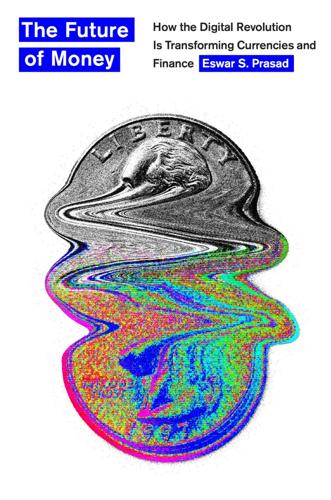
The Future of Money: How the Digital Revolution Is Transforming Currencies and Finance
by
Eswar S. Prasad
Published 27 Sep 2021
Proof of Stake Comes with Its Own Baggage For more details on Delegated Proof of Stake, see “Delegated Proof of Stake Explained,” Binance Academy, https://academy.binance.com/blockchain/delegated-proof-of-stake-explained. Proof of Authority is explained here: “Proof of Authority Explained,” Binance Academy, https://academy.binance.com/blockchain/proof-of-authority-explained. Stablecoins A useful description of various types of early generations of stablecoins is available at Bilal Memon, “Guide to Stablecoin: Types of Stablecoins and Its Importance,” Master the Crypto, https://masterthecrypto.com/guide-to-stablecoin-types-of-stablecoins/. For some evidence on the correlations of cryptocurrency prices, see Aslanidis, Bariviera, and Martínez-Ibañez (2019). The Tether white paper, issued in June 2016, is available at “Tether: Fiat Currencies on the Bitcoin Blockchain,” Tether, https://tether.to/wp-content/uploads/2016/06/TetherWhitePaper.pdf.
…
This modular structure has been compared to that of toy LEGOs, in which a variety of blocks can be combined to create new structures. For example, a user can deposit cryptocurrency into a loan contract, withdraw some stablecoins collateralized by that deposit, and put those stablecoins in a yield-bearing contract. Multiple users pooling their stablecoins could even build a savings game on top of that structure—all of the interest earned on the pooled stablecoins is awarded to a lucky winner, with everyone else getting their initial deposits back. This is not just a theoretical example—it already exists. Such unfettered financial engineering should make regulators nervous.
…
More importantly, none of these protocols can do much to address one of the fundamental deficiencies in their supporting roles in creating a reliable medium of exchange—the instability of the cryptocurrency’s value relative to the unit of account, which is typically a fiat currency. Stablecoins With many players in the cryptocurrency game recognizing that a viable medium of exchange needs stable value more than absolute anonymity or a fully decentralized validation mechanism, a number of cryptocurrencies have sprung up to fill this gap. In a less-than-creative twist, these cryptocurrencies, which ostensibly maintain a stable value relative to fiat currencies, have come to be known as stablecoins. Stablecoins use cryptographic technology to provide some degree of user anonymity, but the validation and settlement of transactions are handled by the issuer of the currency or an authorized party.
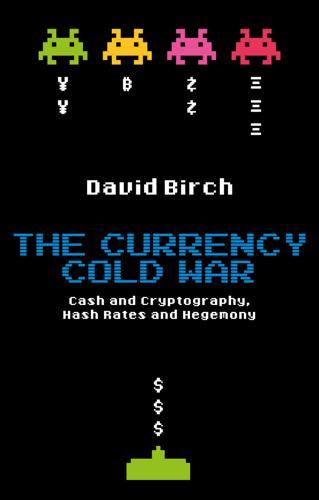
The Currency Cold War: Cash and Cryptography, Hash Rates and Hegemony
by
David G. W. Birch
Published 14 Apr 2020
Hence the term ‘stablecoin’, which is being bandied about by Libra and others. But what does it actually mean? The Bank of England’s excellent Bank Underground blog explains that there are generally two designs of stablecoin: those that are backed by assets and those that are unbacked or ‘algorithmic’ (Dyson 2019). This is right, of course, but I would like to present a slightly more granular classification of stablecoin currencies. Barry Eichengreen of UC Berkeley identifies four kinds, as shown in table 7 (Eichengreen 2019). I will use his helpful breakdown here. Table 7. Categories of stablecoins. CATEGORIZATION BACKING EXAMPLE Fully collateralized Assets (including ‘tier 1’ capital and fiat currencies) Libra, e-Krona Cryptocollateralized Cryptocurrencies Dai Uncollateralized Algorithms Basis Partially collateralized Assets and algorithms Saga There are already instances of each of these approaches being tried in different contexts and at different times, so while it is still early days, we can look at some of these examples for illumination.
…
CATEGORIZATION BACKING EXAMPLE Fully collateralized Assets (including ‘tier 1’ capital and fiat currencies) Libra, e-Krona Cryptocollateralized Cryptocurrencies Dai Uncollateralized Algorithms Basis Partially collateralized Assets and algorithms Saga There are already instances of each of these approaches being tried in different contexts and at different times, so while it is still early days, we can look at some of these examples for illumination. A fully collateralized stablecoin: e-Krona Collateralization includes ‘self-collateralization’, where a central bank creates a digital currency as a claim on itself. One such experiment already in progress is the Swedish central bank’s e-Krona pilot project, which I discussed earlier. A cryptocollateralized stablecoin: Dai The first attempt to scale a stablecoin came from Maker. At the time of writing, there are about half a billion dollars worth of cryptocurrency tied up as collateral for this stablecoin – the Dai – whose value is pegged to the US dollar.
…
CDPs that hold less value in collateral than they do in debt risk being liquidated (with a 13% penalty) and sold off. The algorithms used to try to hold the value of one Dai at $1 are too complicated to go into here, but suffice it to say that they are based on adjusting the supply of Dai according to the demand for it (DiPrisco 2017). An uncollateralized stablecoin: Basis Basis, originally known as Basiscoin, was an attempt to build a stablecoin wholly supported by algorithms as opposed to assets. It was a well-funded start-up (with $100 million plus from Google Ventures, Andreessen Horowitz, Bain Capital and others) that ended up shutting down and returning all of its remaining funds to investors back in 2018.

Number Go Up: Inside Crypto's Wild Rise and Staggering Fall
by
Zeke Faux
Published 11 Sep 2023
So, a few months later, in May 2021, when the editor of Bloomberg Businessweek walked by my desk and floated a crypto assignment, I was ready. “What do you know about stablecoins?” he asked me. * * * — THE ANSWER WAS Not much. But I did know they were called “stablecoins” because, unlike coins with prices intended to go up, they were supposed to have a fixed value of one dollar. That was because each coin was supposed to be backed by one U.S. dollar. The biggest stablecoin by far was called Tether. Tether seemed to be at the center of the crypto world: More Tethers changed hands each day than any other cryptocurrency.
…
I decided to move on to Tether. “Do you deal with stablecoins yourself as part of your business?” I asked. “We have billions of dollars in stablecoins,” he said. Celsius, it turned out, had $18 billion in assets. I couldn’t believe it. Somehow Celsius had accumulated as much money as a large hedge fund with a business plan that wouldn’t even work for a kid’s lemonade stand. “That’s what I was imagining,” I murmured, trying to keep a straight face. Mashinsky said there was no reason to worry about what was backing Tether. “Stablecoins are basically just a digital version of the U.S. dollar, right?”
…
Watching it was like seeing a house of cards collapse in slow motion. The whole time, I was watching Tether prices to see if a run would start on the stablecoin. The crisis started in May. Token prices had been falling, along with tech stocks and other day-trader favorites. Then a crypto company run by an obnoxious thirty-year-old South Korean named Do Kwon exploded. It wasn’t obvious at the time, but this would bring down a huge portion of the crypto economy. Kwon’s main coin was called TerraUSD. It was a stablecoin like Tether, intended to always trade for one dollar. But Kwon didn’t promise to back his coins with dollars in a bank account.

Cloudmoney: Cash, Cards, Crypto, and the War for Our Wallets
by
Brett Scott
Published 4 Jul 2022
In 2021 it rebranded Libra as Diem – planning to issue standard US-dollar backed corporate stablecoins like Tether – but the US government blocked Diem from being developed further, forcing Facebook to sell the technology to a new stablecoin contender called Silvergate. The state raids everyone We have seen commercial banks raid the blockchain concept to co-ordinate their oligopolies, and we have seen crypto-entrepreneurs raid the tethering concept to create so-called stablecoins. We have then seen corporations like Facebook raiding the results of both to create oligopoly-run stablecoins. Now it is time for central banks to stage their own raids.
…
That vision is partially fantasy, because the greatest hope for the Ethereum (and other crypto) communities lies in stablecoins, which remain tethered to, or pegged to, the normal monetary system. Stablecoins are now being used to build so-called ‘DeFi’, or ‘decentralised finance’, platforms. Much in the way ordinary fintech companies rely upon digital bank money, DeFi involves setting up smart contract systems that will administer, lend or route digital stablecoins, and thereby replicate – in a more decentralised form – the same processes of financial automation that mainstream fintech promotes. A DeFi platform, for example, may seek to push out stablecoin loans, providing a partially decentralised fintech platform.
…
Other stablecoins such as DAI have a more advanced mechanism for associating themselves with the US dollar, using pegging to make their token mimic a dollar without being directly tied to banks. These stablecoins are interesting in the context of the war on cash: unlike Bitcoin, they are usable as a stable form of money, and – given that they can be used (semi)-pseudonymously – have a better claim to being called ‘digital cash’. But the stablecoin concept itself can be re-raided. Earlier I showed how the corporate incursion into blockchain technology resulted in private DLT systems, and these can now be used to implement a carefully controlled semi-centralised corporate stablecoin, not dissimilar to a centralised PayPal. This is precisely what happened in 2019, in one of the biggest money stories of the year, and one that still looms over us.
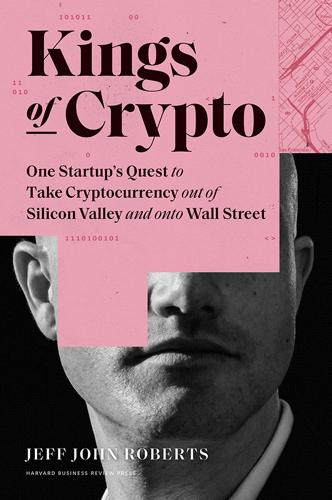
Kings of Crypto: One Startup's Quest to Take Cryptocurrency Out of Silicon Valley and Onto Wall Street
by
Jeff John Roberts
Published 15 Dec 2020
But it wasn’t the only bright spot in the industry. Another came in the form of stablecoins, a crypto innovation that would create hundreds of billions of dollars of value and pique the interest of one of the most powerful corporations in the world. Stablecoins came as a response to one of the most common knocks on bitcoin: extreme volatility. What good was a new type of money if its value fluctuated dramatically every few hours? Stablecoins addressed this problem by providing all the benefits of blockchain-based currency—easy transfers, tamper-proof ledgers, and so on—without that volatility. A bona fide stablecoin would always be worth one US dollar, or fluctuate no more than a penny above or below that.
…
This is what Coinbase did in the summer of 2019, working with rival Circle to create a new cryptocurrency called USD Coin. Meanwhile, the Winklevoss twins created a stablecoin of their own called Gemini Dollar. Soon these and a growing array of other stablecoins provided credibility to the concept and challenged Tether as fixtures of crypto trading markets. By 2020, Coinbase and others were paying interest on customers’ stash of stablecoins—a sign of how cryptocurrency could resemble an ordinary savings account. More importantly, the growth of stablecoins signaled to important people outside the crypto world that blockchain-based money could transform finance.
…
Tether wasn’t the only stablecoin to prompt questions about what was propping it up. In early 2018, a stablecoin startup called Basis raised $133 million from blue-chip investors like Bain Capital and Google Ventures. Basis proposed to keep its coin stable by issuing bonds every time it fell below $1. The plan didn’t make much sense, given there was no guarantee people would buy the bonds. Meanwhile, the SEC warned that the bond plan amounted to selling securities. Basis gave up in short order and returned most of the money it had raised. What did make sense, when it came to stablecoins, was to peg their value to a reserve of US dollars and conduct third-party audits to prove the dollars were really there.
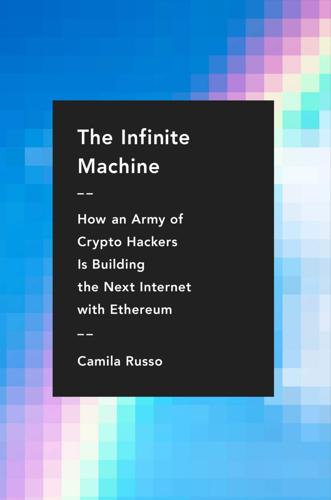
The Infinite Machine: How an Army of Crypto-Hackers Is Building the Next Internet With Ethereum
by
Camila Russo
Published 13 Jul 2020
After spending time in the Bitcoin and BitShares forums, Rune found it was refreshing that the Ethereum community was focused primarily on building innovative tech, rather than on any particular ideology. Back home in Copenhagen, he decided to start an Ethereum-based stablecoin. He didn’t know how to code, but taught himself the basics in two weeks and was able to get a bare-bones system running, which he announced in a March 2015 Reddit post. “Introducing eDollar, the ultimate stablecoin built on Ethereum,” he wrote. “As someone who’s been obsessed with pegged cryptocurrencies for the past 6 months, I was delighted to find out that even with just my meager programming skills, developing for Ethereum is so incredibly easy that I’ve been able to come up with what I believe is close to being the perfect design for a stable cryptocurrency.”
…
As many Ethereum-based tokens were abandoned or proven to be scams, others were showing actual use. One was MakerDAO’s stablecoin Dai. When founder Rune Christensen decided to blow off crypto and do some soul-searching in Southeast Asia after The DAO hack, he had trusted the community would be able to push MakerDAO forward, but by the end of 2016 the project was stuck. The group of people working on it hadn’t been able to decide at what price they should be selling the project’s token MKR—it can be confusing, but the Maker platform has two tokens: Dai, which is the stablecoin, and MKR, which is used to pay stability fees (similar to interest) on Dai loans and vote on governance decisions.
…
News stories didn’t say what the CFTC was investigating, but the fact that there was an investigation taking place gave critics more credibility. An increasing number of skeptics started doubting Tethers were fully backed by dollars, and some said that the stablecoin was being used to manipulate cryptocurrency prices. The following year, Tether admitted that USDT was not fully backed by US dollars and that in fact, only about three-fourths of the stablecoin was backed by fiat equivalents, including cash and short-term securities. Still, the company has denied claims about it using USDT to manipulate crypto markets.2 Tether issuance started gradually rising in April 2017 and dramatically shot up in November, coinciding with the height of the boom and often accelerating when prices dropped.

Fixed: Why Personal Finance is Broken and How to Make it Work for Everyone
by
John Y. Campbell
and
Tarun Ramadorai
Published 25 Jul 2025
See Anne Sibert, “The Icesave dispute,” VoxEU, Centre for Economic Policy Research, February 13, 2010, https://cepr.org/voxeu/columns/icesave-dispute; and HM Treasury, “UK authorities receive final payment from Icesave,” news release, January 15, 2016, https://www.gov.uk/government/news/uk-authorities-receive-final-payment-from-icesave. 23. Jiageng Liu, Igor Makarov, and Antoinette Schoar, “Anatomy of a run: The Terra Luna crash” (NBER working paper 31160, 2023), describe one such stablecoin crash and its damaging consequences for retail investors, and Moody’s provides a timeline of a number of such stablecoin “depegs” in Moody’s Investors Service, “Stablecoins have been unstable. Why?,” Moody’s, October 18, 2023, https://www.moodys.com/web/en/us/about/insights/data-stories/stablecoins-instability.html. 24. Trusted sources of information such as the UK government’s Money and Pensions Service (https://www.moneyhelper.org.uk/en) can partly help to provide the necessary knowledge, though such information requires effort both to seek out and to process. 25.
…
In the United Kingdom in the mid-2000s, for example, a private Icelandic bank offered an online savings account called Icesave with an interest rate above 6%; the bank failed in October 2008 and it was initially unclear whether any government compensation would be available to depositors.22 More recently, unregulated crypto intermediaries have promised high interest rates on deposits of stablecoins that are supposed to maintain a fixed US dollar value, but there have been frequent defaults on such promises, with very damaging consequences for investors.23 The middle ground is to try to find positive interest rates on safe investments, such as money market funds or savings accounts offered by government-insured online banks.
…
“Frequently asked questions about splitting federal income tax refunds,” IRS, updated December 2, 2024, https://www.irs.gov/refunds/frequently-asked-questions-about-splitting-federal-income-tax-refunds. There is also the choice of investing the proceeds into an inflation-linked US savings bond, but these are less liquid, with redemption only possible after twelve months, and early redemption even beyond this point incurring interest-rate penalties. 21. Tether (USDT), a cryptocurrency stablecoin, likewise pays no interest, although some holders earn interest by loaning out their USDT holdings. Christmas clubs, popular in working-class communities in both the United States and the United Kingdom, are another example of savings products with very low interest rates. While they may have value as commitment devices to encourage saving for holiday gifts, they offer extremely poor returns. 22.
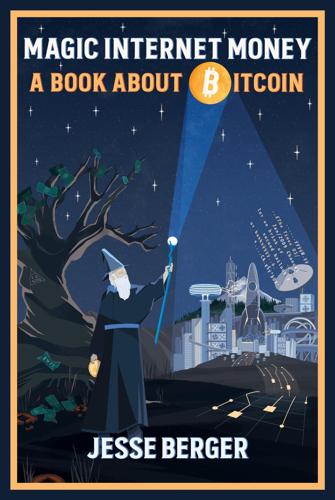
Magic Internet Money: A Book About Bitcoin
by
Jesse Berger
Published 14 Sep 2020
3.5 Fiat Functionality 3.6 Bitcoin on Point 3.7 Bitcoin Functionality Chapter 4: Growth 4.1 The Root of All Growth 4.2 The Value of Price 4.3 Time Is Money 4.4 Calculated Risk 4.5 Divestment Advice Chapter 5: Innovation 5.1 Evolution & Revolution 5.2 The Smart Money 5.3 Blockchain 101 Chapter 6: Resilience 6.1 An Unstoppable Force 6.2 Teamwork Makes the Dream Work 6.3 An Immovable Object 6.4 Harder, Better, Faster, Stronger Chapter 7: Scarcity 7.1 Limited Edition 7.2 $€¥£: A Sea of Fiat 7.3 Setting a Precedent 7.4 Pushing Limits 7.5 Making a Statement 7.6 No Second Chance for First Impressions Chapter 8: Competition 8.1 A New Frontier 8.2 Bitcoin Versus Fiat 8.3 Bitcoin Versus Gold 8.4 Bitcoin Versus Crypto 8.5 Bitcoin Versus Forks 8.6 Bitcoin Versus Stablecoins Chapter 9: Governance 9.1 Fair Is Rare 9.2 Tilted 9.3 Balanced 9.4 Ground Rules 9.5 Lead by Example Chapter 10: Freedom 10.1 The Golden Rule 10.2 The Dependency Trap 10.3 Home of the Brave 10.4 Capital Control 10.5 Moral Hazard 10.6 Amoral Safeguard 10.7 Unchained Chapter 11: Drawbacks 11.1 Mind the Gap 11.2 Ease of Use 11.3 Speed & Scale 11.4 Full Custody 11.5 Dark Mode 11.6 Mining 11.7 On Apathy & Atlas 11.8 Upset the Setup Chapter 12: Outlook 12.1 Monopoly Money 12.2 The Debtor’s Dilemma 12.3 From Sapling to Sequoia 12.4 Forward Guidance 12.5 The Bottom Line Resources Endnotes Key Terms Acknowledgments What Is Money?
…
Although several forks exist today, they can only claim to be tall because they stand on the shoulders of a giant. Only the chain originally envisioned and launched by Satoshi – BTC, the longest chain – has the most proof-of-work and maintains a direct link to the Genesis block, thereby preserving its credibility as a monetary phenomenon. 8.6 Bitcoin Versus Stablecoins “Meet the new boss. Same as the old boss.” Pete Townsend, “Won’t Get Fooled Again” Large institutions have signaled their intent to issue their own digital currencies. The World Economic Forum even launched a framework for their deployment,19 validating the concept of distributed networks as practical value transfer mechanisms.
…
Second, from a technological standpoint, their designs are akin to private blockchains, which in all likelihood will be run by central authorities that retain censorship privileges. All told, this concept is like a paint job for a car in need of a new engine. Digital currencies with face values equivalent to whichever fiat currency they represent are known as “stablecoins.” They could be likened to digital casino chips because they tend to be most useful under the casino’s eye-in-the-sky surveillance apparatus. With this gambit, the issuing authority has no need for favored gaming odds. Instead, it can be expected that they will extract their pound of flesh from valuable personal data by monitoring, analyzing, and regulating your transactions.
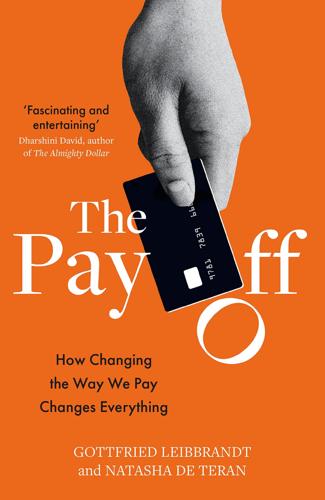
The Pay Off: How Changing the Way We Pay Changes Everything
by
Gottfried Leibbrandt
and
Natasha de Teran
Published 14 Jul 2021
But the Ethereum code seems to be quite handy for launching new crypto tokens, as many of the 5,500 cryptocurrencies (mostly ICOs) are built and executed on the Ethereum distributed computing platform. Tether (THT) Next up in value we have Tether, worth $20 billion. Tether’s THT is the most important of several ‘stablecoins’, which try to address the issue of price fluctuations. Based in Hong Kong, Tether is the company that issues the currency; THT is the currency. THT maintains a one-for-one link with the US dollar. It does so by issuing THT against payment of an equivalent amount in dollars and offering to redeem THT for dollars, also at par.
…
Garnering front-page headlines in all the business dailies, Libra’s mission statement was a bold one: ‘A simple global currency and financial infrastructure that would empower billions of people, reinvent money and transform the global economy so that people everywhere can live better lives.’ Wow! All that from our compassionate comrades at Facebook. Libra (or Diem as it changed its name to in December 2020 – though at the time of writing it continues to be widely referred to as Libra) was intended to be a stablecoin – a crypto instrument that has memorably been described as being ‘neither a stable nor a coin’, but which (in principle, at least) is directly pegged to the price of a specific asset, in this case several existing currencies. Being tied to a basket of major currencies would allow Libra to avoid being subject to the wild fluctuations of Bitcoin and others.
…
Not all cryptocurrencies are Bitcoin and not all digital currencies are crypto. So, OK, perhaps it wasn’t that much of a volte-face when JPMorgan jumped into the crypto craze. The company followed a different direction from Facebook, announcing at the offset that its cryptocurrency would be a bank-backed stablecoin – pegged directly to, and backed one-to-one by, the US dollar. Unlike Libra, JPM Coin appeared to be designed for wholesale payments rather than retail ones. It was intended to serve the institutional market, the idea being that, as a closed currency, JPMorgan clients (such as large corporates and correspondent banks) could use it to settle payments between themselves.

MegaThreats: Ten Dangerous Trends That Imperil Our Future, and How to Survive Them
by
Nouriel Roubini
Published 17 Oct 2022
Because decentralized transactions evade monitoring, the market lures unsavory activities like money laundering, tax evasion, human trafficking, terrorism, criminal financing, and ransomware attacks. Digital “stablecoins” supposedly pegged one-to-one to the dollar or other fiat currencies are also suspect. If they are backed by risky assets, tumbling market value can trigger runs that rattle the crypto market and far beyond. In 2008, few assets seemed safer than money market securities with net asset value anchored to parity. Yet the run on “safe” assets that were not safe during the global financial crisis created havoc that “broke the buck,” meaning net asset value slid below one dollar per share. Cautious observers fear the potential for a similar systemic run on stablecoins. They won’t forget May 2022 when a stablecoin TerraUST backed with an algorithm by another cryptocurrency—Luna—broke the buck and lost almost all of its value.
…
They won’t forget May 2022 when a stablecoin TerraUST backed with an algorithm by another cryptocurrency—Luna—broke the buck and lost almost all of its value. So much for calling it a “stable” coin. And other “stablecoin” like the unregulated Tether also came under significant market pressure. This shady new world is very lightly regulated, if at all. Gary Gensler, who heads the SEC, has warned that serious threats in the crypto and DeFi sectors bring to mind the Wild West. Grave concerns surface in the October 2021 Global Financial Stability Report from the International Monetary Fund: “Many of these entities lack strong operational, governance, and risk practices.

Limitless: The Federal Reserve Takes on a New Age of Crisis
by
Jeanna Smialek
Published 27 Feb 2023
In May 2021, Powell—who had long sounded closer to Quarles than to Brainard in his comments on the matter—released a surprise announcement. “Today we are in the midst of a technological revolution that is fundamentally changing our world,” he began, speaking in a prerecorded video. Cryptocurrencies and stablecoins had quickly grown and evolved, he noted, and “as stablecoins’ use increases, so must our attention to the appropriate regulatory and oversight framework.” It wasn’t just regulation that the Fed was preparing to adjust. The central bank was taking comments on whether it should issue a digital currency. It was hardly a conclusive step, but it was a sign that the Fed was taking the future of money more seriously.
…
She made it clear that creating a digital dollar would be a serious process, one that would probably require buy-in from Congress, since it wasn’t clear if the Federal Reserve Act allowed it to issue a digital currency. She was outlining first, careful steps. The urgency to keep up with digital innovation only intensified as the months passed, though. Internet-famous “meme” stocks took off in 2021, and so did cryptocurrencies, with everyday investors and major banks alike piling on. Stablecoins, private-sector digital tokens that were backed by a bundle of currencies or other assets, were growing exponentially as that happened, in large part because people used them to transact in and out of the new crop of crypto offerings. They were barely regulated because no regime existed yet to oversee them.
…
“Randy”: background, education, and expertise of, 117, 170; bipartisan qualities of, 127; career of, 117–18, 170, 170n; character and personal style of, 118, 120; departure from Fed and concerns about legacy of pandemic response programs, 293–4, 299; digital currency and role of Fed, position on, 272–3; discount window, support for using by banks, 156–7; economic ideology of, 119–21, 293–4, 297; environmental policy role of, 264–5, 268–70; family ties to Eccles, 104, 117–20; Libra, meetings about, 152–3, 153n; marriage and family of, 117–18; meeting before Asian markets open during pandemic, 34–5; Mormon faith of, 119–20; pandemic rescue program role of, 204, 214–16, 246–7; politics of, 127, 127n; regulation changes and deregulation under, 104, 121–2, 125–6, 127, 154–5, 214–16, 296, 347n20; relationship with Powell, 104, 122; resilience of financial system, opinion about, 104; rules-based policies preference of, 214–15; suspension of bank payments, opinion about, 215–16; trust between and working relationship of Powell, Brainard, and, 127–8; Utah home of and commute to D.C., 34, 117–18, 153–4; vice-chair for bank supervision position in, 271; vice-chair for bank supervision role of, 6, 34, 104, 116–17, 120–2; wealth of, 118, 133; work habits of, 152–4 R race and racism: Bostic comment on systemic racism, 223; diversity and racial equity at the Fed, 223–4, 229–31; income and wealth inequality, 23, 223–9, 227n, 348nn13–14, 348n19, 348nn21–22; Kashkari statement on racism, 223; murder of George Floyd and Black Lives Matter protests, 220–3, 347–8n7; racial disparities in public health and economic outcomes during pandemic, 220, 222–3, 250 Ramamurti, Bharat, 248, 249–50, 258 Reagan, Ronald, 83 regulation/financial regulation policy: bank stress tests, 121, 215–16, 216n; changes to and deregulation under Trump administration, 104, 117, 121–2, 125–6, 127, 169, 214–16, 296, 347n20; free-market economics/capitalism, 83, 120–1, 214–16, 264–5; lax oversight as a benefit to political donors, 169–70, 344–5n11; nonbank financial system and regulations, 52, 90, 103, 157–8, 168–72, 174, 216, 345n23, 347n20; oversight, regulation, and supervision of banks and financial markets, 13, 33, 38, 90–2, 103–4, 116–17, 157–8, 214–16, 334n6, 347n20; partisan nature of, 116–17; shadow banks, 168–72, 168n; transparency of, 120–1 research, economic, 12, 13, 222 Revolutionary War, 45, 335n12 Rexnord, 334n11 Rockefeller, John D., 52–3 Romney, Mitt, 164–5, 260, 276 Roosevelt, Franklin D., 63, 67, 68, 75 Rosengren, Eric, 171, 206n, 213–14, 233, 247, 295 Rotary Clubs, 62, 132, 338n81 Ryan, Paul, 96, 344–5n11 S Sanders, Bernie, 99, 102 San Francisco earthquake, 51 Schatz, Brian, 269–70 Schumer, Chuck, 138–9, 191, 199, 260–1 Schwarzman, Stephen, 178 secular stagnation, 114, 341n9 Securities and Exchange Commission, 103 sexism, 125n shadow banks, 168–72, 168n Shelton, Arthur, 54 Shelton, Judy, 235–6, 275–7, 279 shorting stocks, 52, 52n silver-backed money, 46, 47, 50 Silver Lane Elementary School, East Hartford, Connecticut, 11–12, 21, 22, 27–8, 105, 289 60 Minutes, 39–40, 94, 186 Smith, Michelle, 108, 136–7, 240 Snyder, John, 72–4 Solomon, David, 178 soup kitchens and food pantries, 288–9, 352n10 specie, 49, 335n11 stablecoins, 274–5 state and local government/municipal bonds, 152, 167–8, 207–9, 211, 213, 237–8, 248, 258–9, 294, 350n10, 350n31 state banks, 47–8, 336n16 Stein, Jeremy C., 13–14 Stephens, Samantha “Sam,” 202–4, 205, 212, 290–1 stock market crash (1987), 160, 344n47 Strong, Benjamin, Jr., 54n, 60–2, 130 Summers, Lawrence “Larry,” 114, 282–3, 341n9 T Tarullo, Daniel, 116–17, 153, 342n37 Taylor rule, 341n22 TD Securities, 29–30, 32, 163 Temporary Foreign and International Monetary Authorities Repo Facility (FIMA repo), 197–8 Tevlin, Stacey, 137 think tanks, economic and financial, 12, 17, 125n Tlaib, Rashida, 207–9 Today show, 190–1 Toomey, Patrick, 181, 249, 250, 253–4, 259–61, 276, 294 Treasury Department, U.S.: allocation of money for programs, 192, 199, 208, 211, 213, 247–8, 251–2, 253–62, 347n10; Brainard’s positions in, 122; Fed Board role of secretary of, 60, 69; financial decisions made during pandemic by, 7; Kashkari position at, 7, 37; location and meetings of Fed Board at, 60, 68–9; Mnuchin as secretary of, 104; Powell’s positions in, 14, 16–17; Quarles’s positions in, 117, 120–1; 2020 presidential election and continuation of pandemic relief efforts, 253–62, 263 Treasury-Fed Accord, 74 Treasury securities.

Life After Google: The Fall of Big Data and the Rise of the Blockchain Economy
by
George Gilder
Published 16 Jul 2018
It is programmable not only in Java but also in Ethereum’s Solidity.11 Since “stablecoins” will ultimately dominate the currency space as measuring sticks, one of the most intriguing of the projects is the DigixDAO, another Chinese company. The first ICO on the Ethereum blockchain, it surprised the world by raising $5.5 million in a day. The DXC is a coin based on gold bullion, mined in humane ways, and registered on a blockchain. Outperforming all other crypto-assets during the carnage of early 2018, DigixDAO might have proved its point that a tie to gold can enable a stablecoin to serve as a unit of account. Several other companies are following this path of launching digital currencies based on gold.
…
In the Great Unbundling, the blockchain generates tokens of functionality (from BAT for attention to GNT for supercomputing, to RNDR for graphics processing functions). It creates mediums of exchange (bitcoin, ether, Monero, Zcash), stores of value (bitcoin, ether, and others), rivets of security (Blockstack, Rivetz), software languages (Solidity, Golem), and measures of wealth. It has even produced “stablecoins” to serve as units of account, or real money (DigixDAO’s DGX and Emergent’s G-Coin, tied to gold bullion, and Tether, tied to the dollar). And then, the blockchain movement developed ways to mediate between these various tokens, forms, and facets of funds, such as Ripple’s XRP, Bancor, and TREZOR.
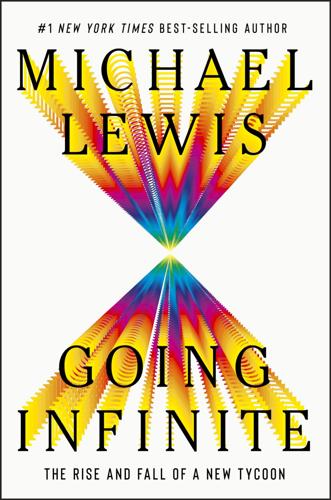
Going Infinite: The Rise and Fall of a New Tycoon
by
Michael Lewis
Published 2 Oct 2023
It had exchanges that did not merely facilitate crypto trades but also warehoused their customers’ money—without any regulator paying a whole lot of attention to how they did this. It even had the equivalent of US dollars, in the form of stablecoins. These were digital currencies on a blockchain, like bitcoin, but, unlike bitcoin, backed by actual dollars. For every dollar’s worth of a stablecoin, there was meant to be a dollar held somewhere in a genuine Federal Deposit Insurance Corporation–insured bank. But again, there was no proof that these dollars were there. The whole edifice relied on a fantastic amount of trust.

Practical Doomsday: A User's Guide to the End of the World
by
Michal Zalewski
Published 11 Jan 2022
That’s not to say that the collapse of these instruments is imminent. In some sense, a coin that represents a mathematical proof of wasted electricity is no better or worse than a currency with pictures of dead presidents. There might be a future where we’re all using Bitcoin, Dogecoin, or one of the experimental “stablecoins” that are meant to be tethered to the value of physical commodities. But until that day comes, enthusiasm for a new technology is probably not a good substitute for principled management of risk. Revisiting Dangers to Liquidity and Capital This lengthy stroll through the history of money serves an important purpose.